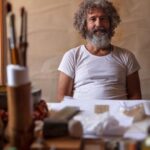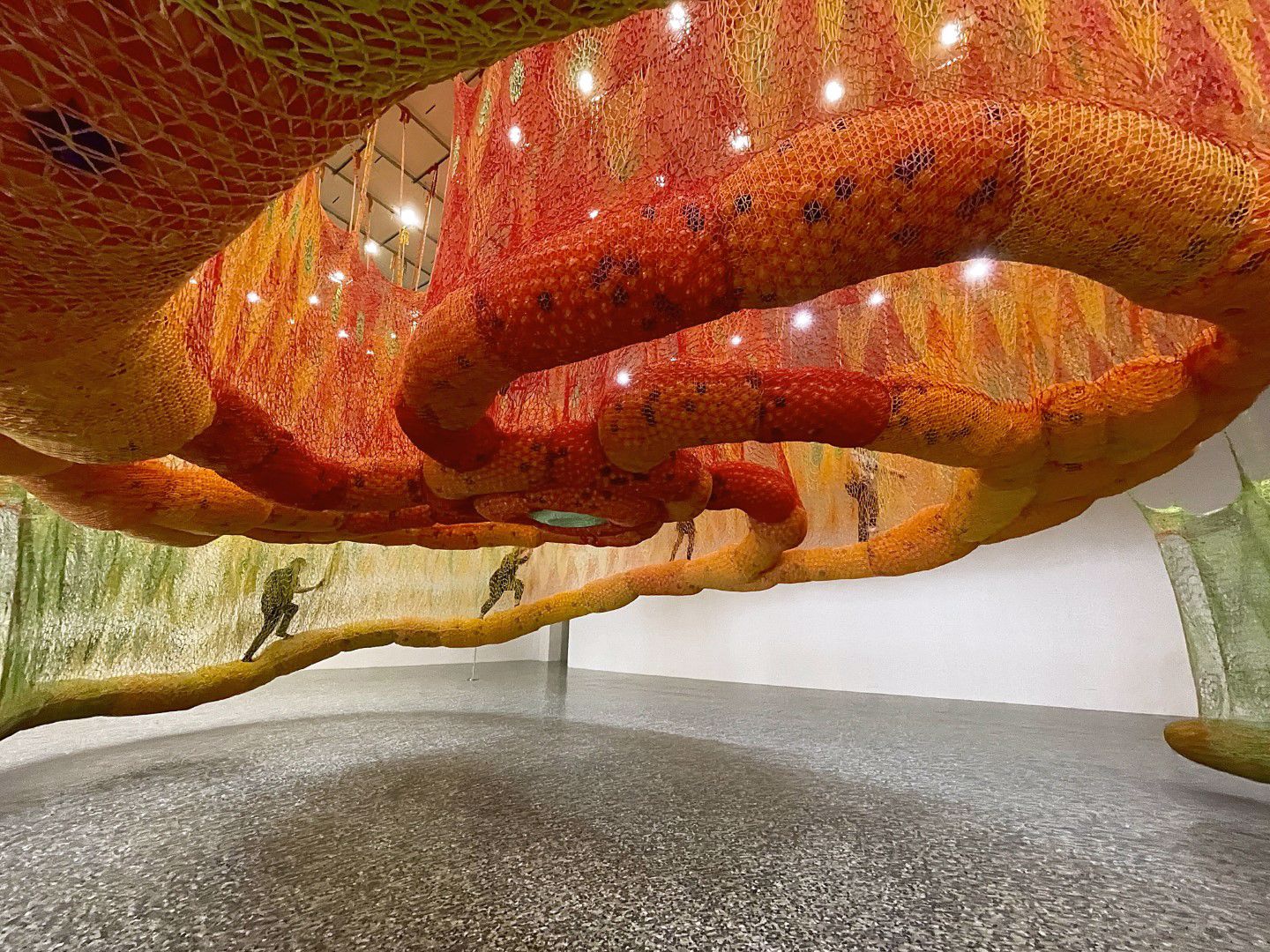Ernesto Neto: SunForceOceanLife at MFA
[vc_row][vc_column][vc_column_text]Fino al 26 settembre 2021
Museum of Fine Arts, Houston.
Caroline Wiess Law Building
Bissonnet 1001, Houston, TX 77005
To know more https://www.mfah.org/exhibitions/ernesto-neto-sunforceoceanlife
The Museum of Fine Arts, Houston, present Ernesto Neto: SunForceOceanLife, a major commission and one of the largest crochet works to date by the renowned Brazilian artist. Over the course of three weeks, a team of a dozen people has construct a labyrinth of interior pathways for visitors to explore, all while suspended 12 feet in the air. Ernesto Neto: SunForceOceanLife, the seventh installment of the Museum’s summer immersive art series, is on view from Sunday, May 30, through Sunday, September 26, 2021 in Cullinan Hall of the Caroline Wiess Law Building.
“Ernesto Neto has captivated audiences around the world with his multi-sensory, structural environments—each one unique in nature and its visitor experience,” said Gary Tinterow, Director, the Margaret Alkek Williams Chair, MFAH. “We are delighted to bring this monumental, one-of-a-kind piece to our Museum and into our collection. It exemplifies our ongoing commitment to Latin American art and presentations of immersive, contemporary installations year after year.”
SunForceOceanLife is a spiraling, structural marvel that highlights the cyclical relationship between the sun and the sea to produce life on earth. This massive installation fill Cullinan Hall with yellow, orange, and green materials that are hand-woven into a myriad of patterns and sewn together in a spiral formation. At nearly 30 feet x 79 feet x 55 feet, the structure is suspended from the ceiling and spirals outward from the center of Cullinan Hall to form one point of entry and one point of exit: the former at the entryway to the pavilion and the latter at the rear of the piece facing the south wall. As visitors enter, they follow a path through the interior passages to its center. Each crocheted section is filled with soft, plastic balls underfoot that move with each step, forcing visitors to focus on their inner balance and the stability of their own bodies.
“A structural feat, this site-specific piece for Cullinan Hall takes inspiration from the artist’s long-term study of and commitment to the art, culture, and traditions of various cultures that form Brazil,” said Mari Carmen Ramírez, Wortham Curator of Latin American Art and Founding Director of the International Center for the Arts of the Americas (ICAA), MFAH. “Neto transforms crochet, a popular Brazilian craft, taught to him by his grandmother and typically executed by women on a small, delicate scale, into massive structures that float several feet above the ground.”[/vc_column_text][vc_single_image image=”33315″ img_size=”full” alignment=”center” onclick=”link_image”][vc_column_text]
SunForceOceanLife (detail), 2020, crocheted textile and plastic balls, The Museum of Fine Arts, Houston, Museum purchase funded by The Caroline Wiess Accessions Endowment Fund Copyright Ernesto Neto, photograph by Albert Sanchez
[/vc_column_text][vc_column_text]“SunForceOceanLife is about fire, the vital energy that enables life on this planet,” said artist Ernesto Neto. “Every time we complete one crocheted spiral with the polymer string used in this work, we burn both ends with fire in a gesture that evokes meditation, prayer, and other sacred rituals. I hope that the experience of this work will feel like a chant made in gratitude to the gigantic ball of fire we call the sun, a gesture of thanks for the energy, truth, and power that it shares with us as it touches our land, our oceans, and our life. SunForceOceanLife also unites the disciplines of art and culture with biology and cosmology; it directly engages the body as does a joyful dance or meditation, inviting us to relax, breathe, and uncouple our body from our conscious mind. The sensation of floating, the body cradled by the crocheted fruits of our labor, brings to mind a hammock: the quintessential indigenous invention that uplifts us and connects us to the wisdom and traditions of our ancestors.”

Ernesto Neto (born 1964) has produced an influential body of work that explores constructions of social space and the natural world by inviting physical interaction and sensory experience since the mid-1990s. Drawing from Biomorphism, Arte Povera, and Minimalist sculpture, along with Neo-Concretism and other Brazilian vanguard movements of the 1960s and 1970s, the artist both references and incorporates organic shapes and materials—spices, sand, and shells among them—that engage all five senses, producing a new type of sensory perception that renegotiates boundaries between artwork and viewer, the organic and manmade, the natural, spiritual, and social worlds. Born in Rio de Janeiro, the artist continues to live and work in Brazil.[/vc_column_text][/vc_column][/vc_row]
